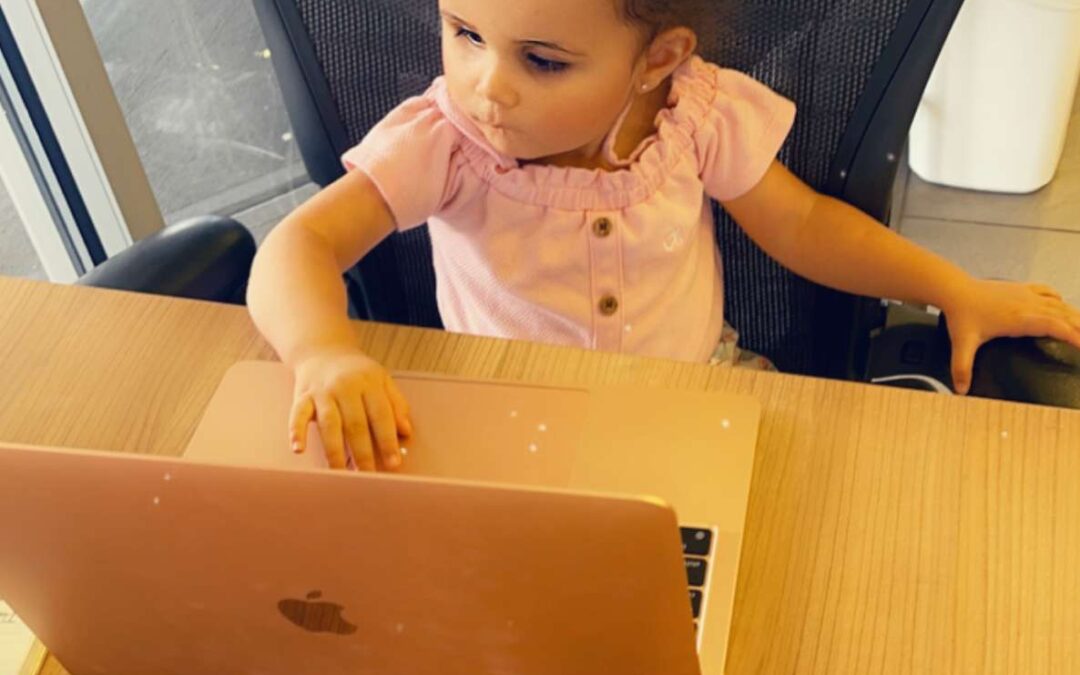Sunday, January 23rd is National Handwriting Day. In honor of that it seemed appropriate to explore how our kids learn to write and ways we, as caretakers, can help them develop this skill.
Although kiddos may start to scribble sometime between 12 and 18-months, our children actually start developing this skill moments after they are born. Every time they grab onto a finger or small toy placed in their hand they are building this technique. This is called the Grasp Reflex and is automatic rather than on purpose. Over the next 6 months our babies further develop this ability by grabbing onto things they want and letting go of things when they are done with them.
As their ability to control their hands and fingers improves, they start grabbing objects more with their palm and may begin doing something called raking with smaller items. With their hand facing down they will drag their fingers over objects to bring them toward their palm. The result can be frustrating for kiddos who are trying to feed themselves the occasional puff or piece of banana as they sometimes can’t figure out how to get the food out of their palm and into their mouth. Luckily around 6 months old they are also learning to straighten one finger to poke or point at objects. This new skill makes self-feeding a little easier.
Kiddos approaching 1 year old are feeding themselves more regularly and can pick up food and other small objects with their finger and thumb. This is called a Pincer Grasp. You may notice that at the beginning, they use the thumb and side of their finger or the pads of both thumb and finger. Both of these are normal, and, with practice, they should progress to using the tips of their thumb and finger. During this time, they are also sitting upright and learning how to crawl. While these activities may seem unrelated to handwriting, kiddos need to develop strong trunk and shoulder muscles so they can hold their body and head upright and still while moving their hand and fingers with the complex movements required to write and draw. Another seemingly unrelated skill that our kiddos are developing is crawling. However, research has shown that watching their hand movements during crawling correlates with being able to track across the page while reading and writing.
One-year old’s may just be interested in holding a crayon. Although they have learned how to pick-up beads and other small things with their finger and thumb, they have not yet developed the control necessary to use this grip in order to scribble with a crayon, pencil, or marker. Within the next 6 months, you may notice your kiddos grabbing the length of the crayon in their fisted hand with the point toward their pinky and moving their whole arm to scribble on paper. During this time it probably won’t be obvious as to whether they are going to use their right hand or left hand to write as hand-dominance may not develop until closer to the age of 3. As they are learning to enjoy coloring, they may adopt a variety of positions to hold crayons and other writing instruments. By the time they are 4 they should begin holding writing tools with the ends of their fingers but are probably not using a true Tripod Grasp, how you and I hold our pencils. This may not fully develop until after 5-years old.
The key take-away from all this is that it is a process every child needs to go through to set them up for success in kindergarten. Some children may develop these skills quicker than others and that’s ok. We, as parents and caregivers, should be offering lots of play that helps to strengthen their body and mind. Here are some ideas you might want to consider:
- Encourage crawling on flat surfaces, stairs, and through obstacle courses (8 mo+)
- Snip with scissors (snip play dough as early as 18+ mo, 24-30 mo for snipping paper)
- Use tongs to collect pom poms (18+ mo)
- Put pieces into a shape sorter or complete a basic 3-piece puzzle (24+ mo)
- Squish play dough or bread dough and maybe even hide small objects, or food items if using bread dough, within the dough and have your kiddo dig them out (24+ mo for more independent play, earlier if supervised)
- String large beads or tube-pasta onto a shoe lace (24+ mo)
- Hang from overhead bar (36+ mo)
If your kiddo is not interested in coloring, is struggling to hold a pencil, or if you have any other questions about how to support their growth and development, reach out for an evaluation. Our therapists at Kid Physical have over 32 combined years’ experience offering specialized, holistic healthcare for children of all ages. Our top priority is providing support for both caregivers and children so that everyone can reach their highest potential.

